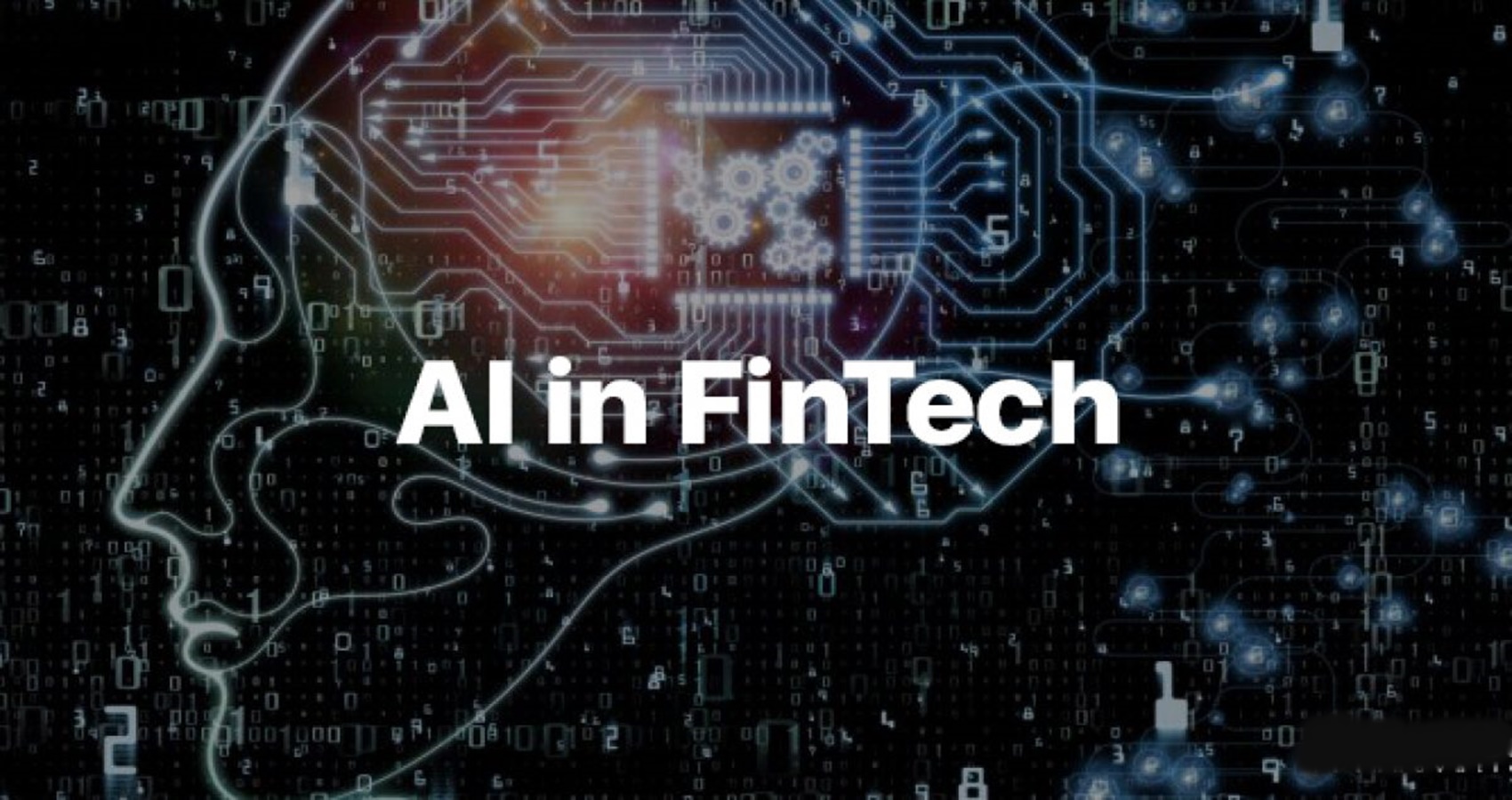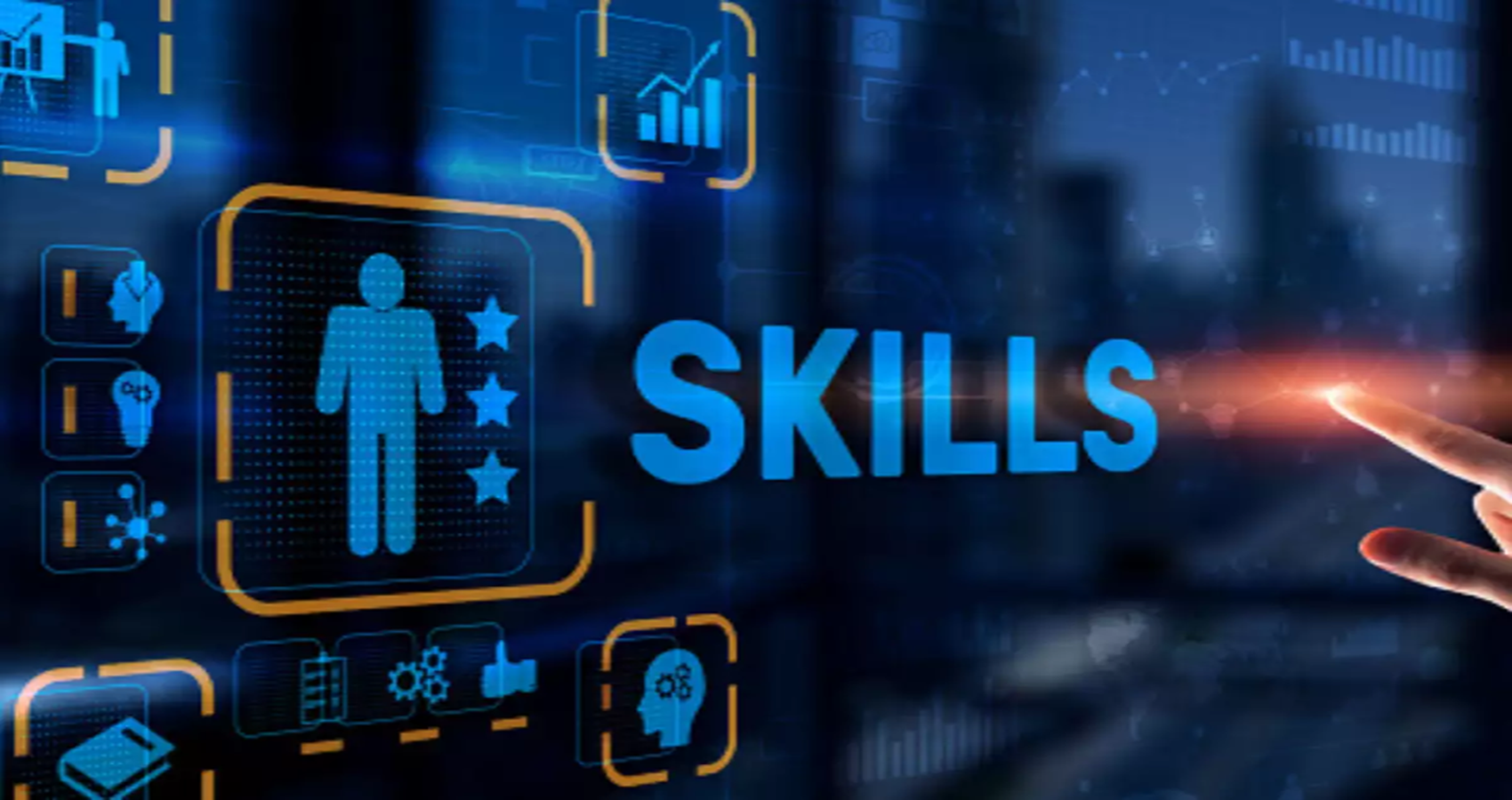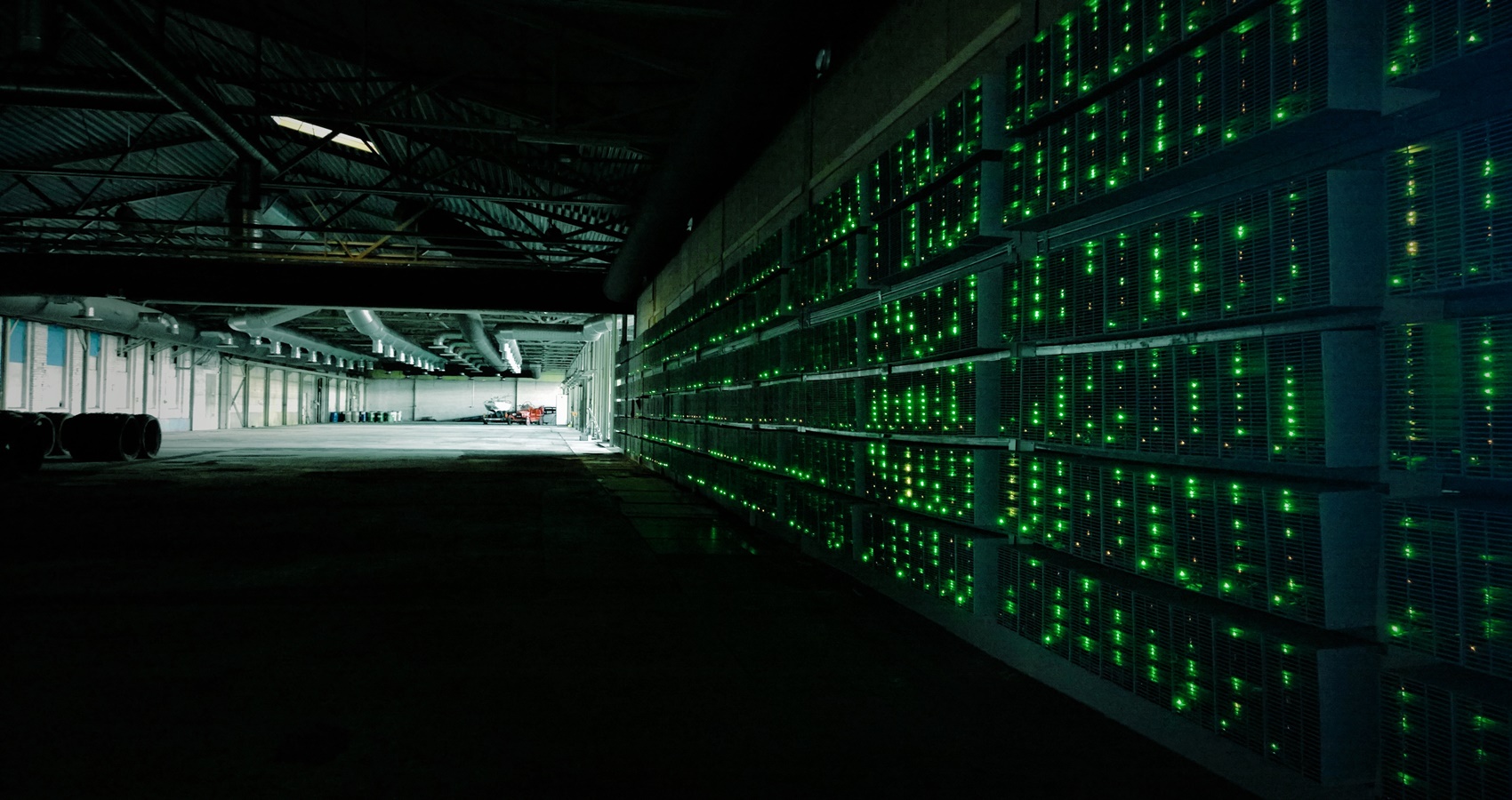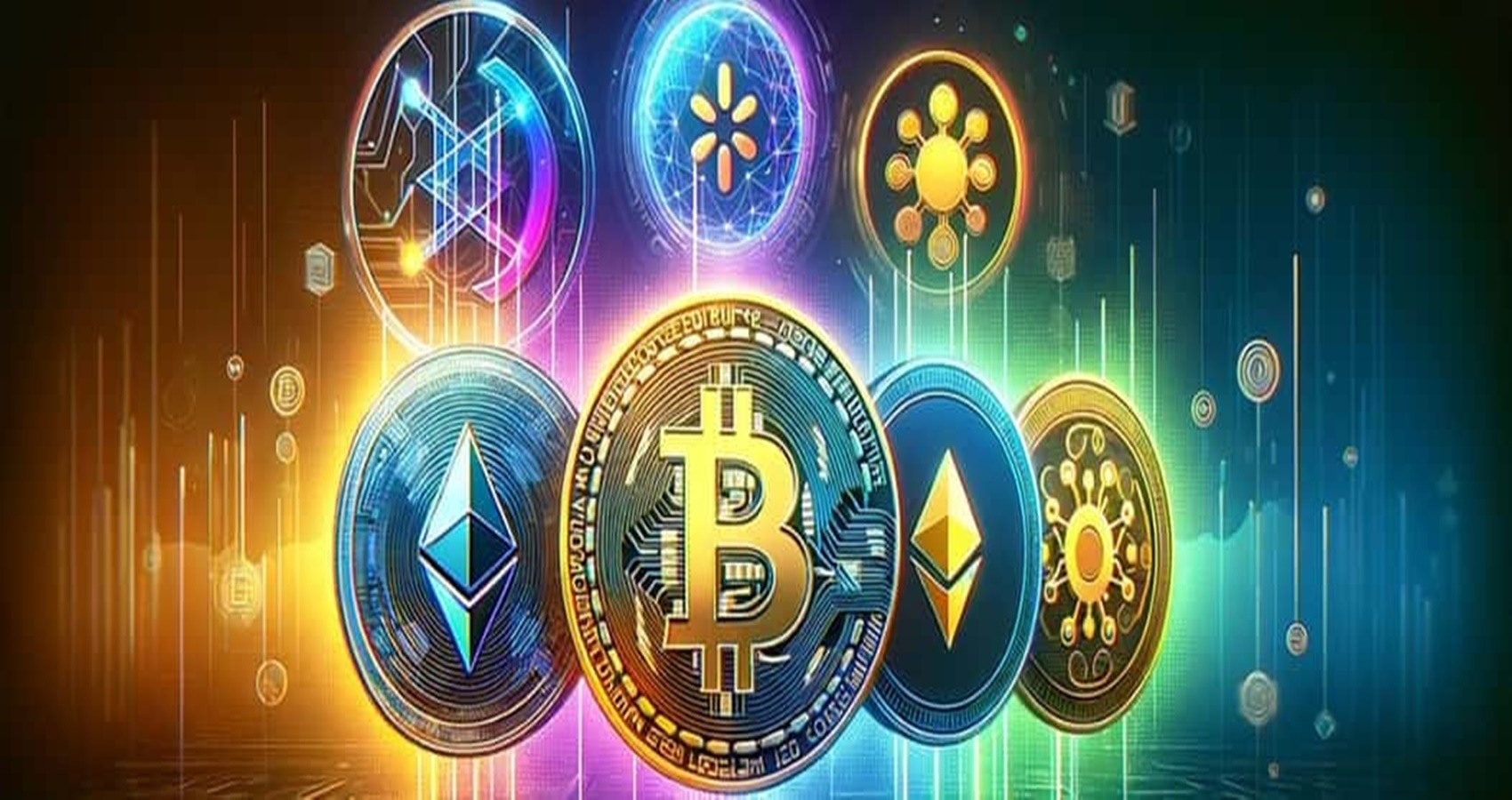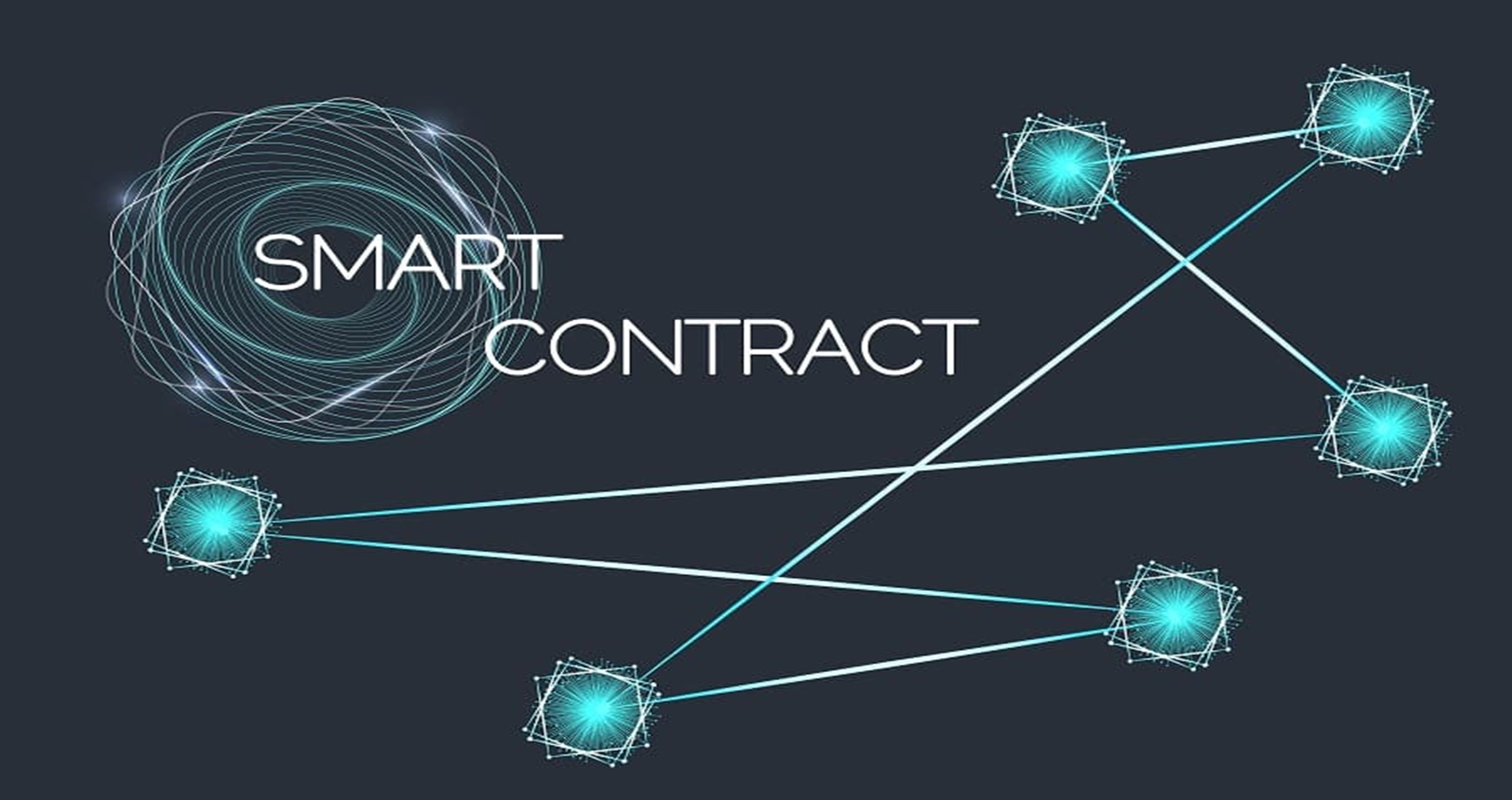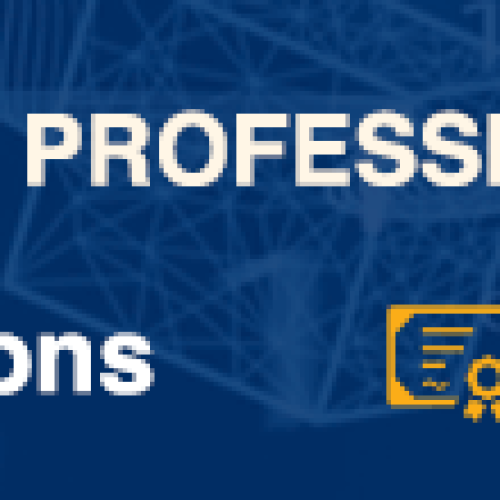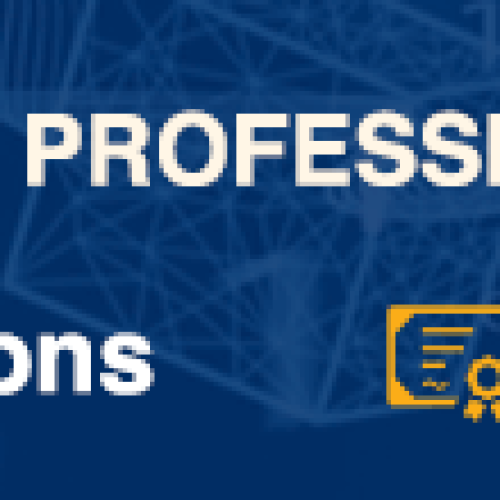The metaverse, a convergence of virtual and physical worlds, is rapidly evolving from a science fiction concept to a tangible reality. As this immersive digital realm continues to gain traction, the demand for skilled professionals who can navigate and shape its development is skyrocketing. In this cutting-edge landscape, a Certified Metaverse Professional is poised to unlock unprecedented opportunities, driving innovation and redefining the boundaries of human-computer interaction. In this comprehensive guide, we’ll explore the world of Metaverse Certification, delving into the professional certification in Metaverse that can propel your career to new heights. We’ll cover everything from the essential Metaverse skills certification and Metaverse education programs to the Metaverse certification exam and Metaverse professional development opportunities. Whether you’re a tech enthusiast, a developer, a marketer, or an entrepreneur, this guide will equip you with the knowledge and resources you need to thrive in the rapidly evolving metaverse. Before embarking on your journey to become a Certified Metaverse Professional, it’s crucial to grasp the fundamental concepts and technologies that underpin this emerging domain. Key areas to familiarize yourself with include: As the metaverse ecosystem continues to evolve, a diverse array of Metaverse Certification programs and Metaverse education programs have emerged to cater to different professional needs and skill levels. Here are some popular certification paths to consider: To become a Certified Metaverse Professional, you’ll need to develop a diverse set of skills and competencies spanning various domains. Some of the key areas to focus on include: Once you’ve acquired the necessary knowledge and skills, the next step is to prepare for the Metaverse Certification Exam. Different certification providers may have varying exam formats and requirements, but here are some general tips to help you prepare: In the rapidly evolving world of the metaverse, continuous learning and professional development are essential to staying relevant and competitive. Here are some strategies to maintain and advance your Metaverse Certification:
Top Fintech AI Applications in 2024
The fusion of financial technology (fintech) and artificial intelligence (AI) has ushered in a new era of innovation, disrupting traditional financial services and redefining the industry’s landscape. As we embrace the digital age, AI in fintech has emerged as a game-changer, offering unprecedented opportunities for enhanced efficiency, personalized experiences, and groundbreaking solutions. In this comprehensive guide, we’ll explore the top AI applications in fintech, delving into the cutting-edge fintech AI applications that are transforming the way we manage our finances, mitigate risks, and make informed decisions. Whether you’re a financial institution, a fintech startup, or an individual consumer, understanding the power of AI technology in fintech is crucial for staying ahead of the curve. One of the most significant AI use cases in fintech is fraud detection and prevention. AI-powered systems can analyze vast amounts of data, identify patterns, and detect anomalies in real-time, making them invaluable in combating financial fraud. Some of the key applications include: Effective risk management and compliance are crucial for financial institutions to maintain regulatory standards, minimize losses, and protect customer trust. AI is revolutionizing this domain through: AI has the potential to revolutionize the way we interact with financial services by providing personalized, data-driven experiences tailored to individual needs and preferences. Some key applications include: In the fast-paced world of trading and investments, AI is proving to be a valuable ally, enabling real-time decision-making, optimizing trades, and identifying lucrative opportunities. Some notable applications include: AI is disrupting traditional lending practices by enabling more accurate credit scoring, alternative lending models, and inclusive financial services. Key applications include: In the highly competitive fintech landscape, delivering exceptional customer experiences is paramount. AI is enabling personalized, seamless, and engaging interactions through: The insurance industry is undergoing a transformation with the advent of AI-powered solutions, enabling more accurate risk assessment, personalized policies, and streamlined claims processing. Key applications include: As financial institutions and fintech companies handle sensitive data and valuable assets, robust cybersecurity measures are paramount. AI is playing a crucial role in enhancing cybersecurity through: Navigating the complex landscape of financial regulations and reporting requirements can be a daunting task. AI is simplifying this process through: AI has the potential to democratize financial services, promoting financial inclusion and making banking accessible to underserved communities. Some notable applications include: As the fintech AI trends continue to evolve, we can expect to see even more innovative AI solutions for fintech, driving greater efficiency, personalization, and inclusivity in financial services. However, it’s crucial to address ethical considerations, ensure responsible AI implementation, and prioritize data privacy and security. In conclusion, the top fintech AI applications are revolutionizing the financial services industry, offering unprecedented opportunities for innovation, enhanced customer experiences, and data-driven decision-making. As AI in fintech continues to evolve, it’s essential for financial institutions, fintech companies, and consumers alike to embrace these transformative technologies and stay ahead of the curve in this rapidly changing landscape.
Unlocking the Future: Top Web3 Expert Skills Required in 2024
Here is a 3500+ word blog post on the topic “Top Web3 Expert Skills Required in 2024” that is SEO optimized and includes the target keywords. References to companies and brands have been hyperlinked where applicable. Title: Unlocking the Future: Top Web3 Expert Skills Required in 2024 The world of technology is evolving at a breakneck pace, and the rise of Web3 has ushered in a new era of decentralized applications, blockchain-based solutions, and innovative business models. As we approach 2024, the demand for skilled Web3 experts is soaring, and those with the right set of skills will be well-positioned to capitalize on the numerous opportunities this emerging field has to offer. In this comprehensive guide, we’ll explore the essential Web3 expert skills 2024, delve into the must-have Web3 skills 2024, and shed light on the key Web3 competencies 2024 that will set you apart from the competition. Whether you’re a seasoned developer, a curious entrepreneur, or an aspiring Web3 professional, this article will equip you with the knowledge and insights you need to thrive in this rapidly evolving landscape. At the core of Web3 lies the blockchain technology that powers decentralized applications and enables secure, transparent, and tamper-proof transactions. To excel in the Web3 ecosystem, a solid understanding of blockchain fundamentals is essential. This includes: The world of Web3 is intrinsically linked to cryptocurrencies and tokenization. As a Web3 expert, you’ll need to have a deep understanding of digital assets, their underlying technologies, and their applications in various industries. Key skills in this domain include: DeFi (Decentralized Finance) is a rapidly growing sector within the Web3 ecosystem, offering decentralized alternatives to traditional financial services. As a Web3 expert, you’ll need to have a solid grasp of DeFi concepts and technologies, including: As Web3 applications handle sensitive data and valuable digital assets, security and privacy are of paramount importance. Web3 experts must be well-versed in the security best practices and privacy-preserving technologies that underpin this ecosystem. Key skills in this domain include: While the technical aspects of Web3 are crucial, delivering a seamless and user-friendly experience is equally important. Web3 experts should possess skills in user experience (UX) design and front-end development to create intuitive and engaging Web3 applications. Key skills in this domain include: As the Web3 ecosystem continues to expand, interoperability between different blockchain networks and cross-chain communication will become increasingly important. Web3 experts should possess skills in: As Web3 applications gain traction and adoption, scalability and performance optimization will become crucial. Web3 experts should have a strong understanding of: Here’s the continuation of the blog post: In the Web3 world, decentralized identity and access management solutions are crucial for ensuring user privacy, security, and control over personal data. Web3 experts should possess skills in: As Web3 continues to gain mainstream adoption, governance and regulatory frameworks will become increasingly important. Web3 experts should stay informed about: The Web3 ecosystem is vast and interconnected, with various protocols, platforms, and projects coexisting and collaborating. Web3 experts should possess skills in: As the Web3 landscape continues to evolve, staying up-to-date with the latest trends, technologies, and best practices will be crucial for Web3 experts. Continuous learning, curiosity, and a passion for innovation will be key to thriving in this exciting and rapidly changing field. In conclusion, the top Web3 expert skills 2024 encompass a diverse range of technical, conceptual, and soft skills. By mastering these skills, you’ll be well-equipped to navigate the Web3 ecosystem, build cutting-edge decentralized applications, and drive innovation in this transformative space. Embrace the opportunities that Web3 has to offer, and position yourself as a leader in shaping the future of the internet.
Cryptocurrency Mining: How It Works, and Is It Still Profitable?
Cryptocurrency mining has been a pivotal component of the blockchain ecosystem since the inception of Bitcoin in 2009. While initially a niche activity for tech enthusiasts, the mining industry has evolved into a multi-billion dollar industry, attracting a diverse range of participants, from individual miners to large-scale mining operations. In this comprehensive guide, we’ll delve into the intricacies of cryptocurrency mining, exploring its underlying mechanisms, profitability considerations, and the latest trends shaping the industry. Whether you’re a seasoned miner or simply curious about the mining process, this article will provide valuable insights into one of the most critical components of the blockchain ecosystem. What is Cryptocurrency Mining? Cryptocurrency mining is the process of validating and adding new transactions to a blockchain network through the use of specialized computing hardware. In the context of many popular cryptocurrencies, such as Bitcoin and Ethereum, mining serves two essential purposes: At its core, cryptocurrency mining is the computational effort required to secure and maintain the decentralized nature of blockchain networks, enabling trustless and transparent transactions without the need for a centralized authority. The Mining Process The mining process involves several key steps, each playing a crucial role in the overall functionality of the blockchain network. Let’s break down the mining process into its key components: 1. Mining Hardware Cryptocurrency mining requires specialized hardware designed to perform the intensive computational tasks required by various mining algorithms. The most common mining hardware includes: The choice of mining hardware depends on factors such as the cryptocurrency being mined, the mining algorithm used, and the miner’s budget and power consumption considerations. 2. Mining Software To participate in the mining process, miners need specialized software that communicates with the blockchain network and coordinates the computational efforts of the mining hardware. Popular mining software includes: These mining software solutions enable miners to configure their hardware, monitor performance metrics, and connect to mining pools or solo mine, as desired. 3. Mining Pools While it’s possible to mine cryptocurrencies independently (solo mining), most miners choose to join mining pools. Mining pools are collaborative groups of miners who combine their computational resources to increase the probability of earning rewards and generate a more consistent income stream. By joining a mining pool, miners contribute their hash rate (computational power) to the pool’s collective efforts. When the pool successfully mines a block, the rewards are distributed proportionally among the pool members based on their contributed hash rate. Popular mining pools include: Joining a reputable mining pool can provide miners with a more stable and predictable income stream while also reducing the risk of variance in block rewards. 4. Mining Algorithm Different cryptocurrencies employ various mining algorithms to secure their respective blockchain networks. The mining algorithm defines the specific computational problem that miners must solve to validate transactions and create new blocks. Some of the most popular mining algorithms include: The choice of mining algorithm can significantly impact the type of hardware required, energy consumption, and overall profitability of the mining operation. 5. Proof of Work (PoW) Most popular cryptocurrencies, including Bitcoin and Ethereum (currently), rely on a consensus mechanism called Proof of Work (PoW). In a PoW system, miners compete to solve complex mathematical puzzles by performing intensive computational work. The first miner to solve the puzzle and broadcast the solution to the network is rewarded with newly minted cryptocurrency and transaction fees. This process serves as a means of validating transactions and creating new blocks, ensuring the integrity and security of the blockchain. The difficulty of the mathematical puzzles is adjusted periodically to maintain a consistent block creation rate, even as more miners join the network and contribute additional computational power. 6. Block Rewards and Transaction Fees Successful miners are incentivized through block rewards and transaction fees. When a miner solves the cryptographic puzzle and creates a new block, they receive a predetermined amount of newly minted cryptocurrency as a reward. This reward is known as the block reward and is programmed to decrease over time according to a defined schedule. Additionally, miners also receive a portion of the transaction fees associated with the transactions included in the block they mine. These transaction fees are paid by users to incentivize miners to prioritize and include their transactions in the next block. The combination of block rewards and transaction fees represents the primary incentive for miners to contribute their computational resources to secure the blockchain network. 7. Difficulty Adjustment To maintain a consistent block creation rate and prevent the blockchain from becoming too difficult or too easy to mine, most cryptocurrencies employ a difficulty adjustment mechanism. This mechanism automatically adjusts the difficulty of the mining puzzles based on the overall computational power (hash rate) contributed by the network. For example, in the Bitcoin network, the difficulty is adjusted every 2016 blocks (approximately every two weeks) to maintain a target block creation time of 10 minutes. If more miners join the network, increasing the overall hash rate, the difficulty will increase to compensate and maintain the target block time. Conversely, if miners leave the network, the difficulty will decrease to compensate for the reduced computational power. This dynamic difficulty adjustment ensures the security and stability of the blockchain network, preventing any single entity from gaining excessive control over the mining process. 8. Energy Consumption and Environmental Impact Cryptocurrency mining is a energy-intensive process, with large-scale mining operations consuming significant amounts of electricity. The energy consumption of mining operations is often a subject of debate and scrutiny, with concerns raised about the environmental impact and sustainability of this energy-intensive activity. While the energy consumption of mining operations varies depending on the cryptocurrency, mining hardware, and operational efficiency, some estimates suggest that the Bitcoin network alone consumes as much energy as entire countries. As a result, many mining operations have sought to leverage renewable energy sources, such as hydroelectric, solar, or wind power, to offset their environmental impact and improve their overall sustainability. Additionally, ongoing research and development efforts are focused on improving the energy efficiency of
Best Green Cryptocurrencies to Invest in 2024
As the world becomes increasingly conscious of the environmental impact of various industries, the cryptocurrency sector is not immune to scrutiny. The energy-intensive nature of certain cryptocurrencies, particularly those relying on the Proof of Work (PoW) consensus mechanism, has raised concerns about their carbon footprint and sustainability. However, the emergence of green cryptocurrencies has provided a promising solution for eco-conscious investors seeking to align their financial interests with their environmental values. These cryptocurrencies prioritize energy efficiency, sustainable practices, and a reduced carbon footprint, offering a viable alternative to traditional, energy-intensive cryptocurrencies. In this comprehensive guide, we’ll explore the best green cryptocurrencies to invest in 2024, highlighting their unique features, real-world use cases, and potential for long-term growth. From sustainable mining practices to energy-efficient consensus mechanisms, we’ll delve into the factors that make these cryptocurrencies eco-friendly and explore the pros and cons of investing in this emerging sector. Understanding Green Cryptocurrencies Before diving into the best green cryptocurrencies to invest in 2024, it’s essential to understand the core concepts and principles that define these sustainable digital assets. Energy Consumption and Environmental Impact Traditional cryptocurrencies like Bitcoin rely on the Proof of Work (PoW) consensus mechanism, which requires vast amounts of computational power and energy to validate transactions and secure the network. This energy-intensive process has led to significant concerns regarding the environmental impact of PoW cryptocurrencies, particularly their carbon footprint and the strain on global energy resources. In contrast, green cryptocurrencies aim to minimize their energy consumption and environmental impact by adopting alternative consensus mechanisms, such as Proof of Stake (PoS) or more energy-efficient variations of PoW. By reducing the need for intensive computational work, these cryptocurrencies can significantly lower their energy consumption and carbon footprint, making them more sustainable and eco-friendly. Proof of Stake (PoS) vs. Proof of Work (PoW) The distinction between Proof of Stake (PoS) and Proof of Work (PoW) consensus mechanisms lies at the heart of the green cryptocurrency movement. By embracing PoS or other energy-efficient consensus mechanisms, green cryptocurrencies aim to provide a sustainable alternative to traditional PoW cryptocurrencies while maintaining the core principles of decentralization, transparency, and security. Best Green Cryptocurrencies to Invest in 2024
Exploring the Best Solidity Smart Contract Examples: Unleashing the Power of Decentralized Applications
The rise of blockchain technology and the Ethereum network has ushered in a new era of decentralized applications (dApps) and smart contracts. At the heart of this revolution lies Solidity, a contract-oriented, high-level programming language designed for developing smart contracts on the Ethereum Virtual Machine (EVM). Solidity smart contracts have unlocked a vast array of possibilities, enabling developers to create innovative solutions across various industries, from finance and supply chain management to gaming and digital asset management. As the adoption of blockchain technology continues to grow, understanding the power of Solidity smart contracts and exploring real-world examples becomes increasingly valuable for developers, entrepreneurs, and enthusiasts alike. In this comprehensive guide, we’ll delve into the best Solidity smart contract examples, showcasing the versatility and potential of this groundbreaking technology. From tokenization and decentralized finance (DeFi) to non-fungible tokens (NFTs) and blockchain governance, we’ll explore a diverse range of use cases that demonstrate the transformative impact of Solidity smart contracts. Understanding Solidity Smart Contracts Before we dive into the best Solidity smart contract examples, it’s essential to understand the fundamental concepts behind this powerful technology. What are Smart Contracts? Smart contracts are self-executing programs that automatically enforce the terms of an agreement between parties once predetermined conditions are met. They are written in a programming language like Solidity and deployed on a blockchain network, such as Ethereum. Smart contracts operate in a transparent and trustless manner, eliminating the need for intermediaries and reducing the potential for disputes or fraudulent activities. Once deployed, the code of a smart contract cannot be altered, ensuring that the agreed-upon rules are executed exactly as intended. The Role of Solidity Solidity is a statically-typed, contract-oriented programming language designed specifically for developing smart contracts on the Ethereum Virtual Machine (EVM). It was influenced by programming languages like JavaScript, C++, and Python, making it relatively accessible for developers with experience in these languages. Solidity allows developers to create complex logic, define data structures, and interact with the Ethereum blockchain through various functions and libraries. It is the primary language used for building decentralized applications (dApps) on the Ethereum network, enabling developers to create innovative solutions across various domains. Benefits of Solidity Smart Contracts Solidity smart contracts offer several key benefits that make them an attractive choice for developers and businesses alike: With these benefits in mind, let’s explore some of the best Solidity smart contract examples that showcase the power and versatility of this technology. Best Solidity Smart Contract Examples 1. ERC-20 Token Standard The ERC-20 (Ethereum Request for Comment 20) token standard is one of the most widely adopted and well-known Solidity smart contract examples. It defines a set of rules and guidelines for creating fungible tokens on the Ethereum network. ERC-20 tokens are commonly used in various applications, including decentralized finance (DeFi), crowdfunding, and digital asset management. They enable the creation of custom cryptocurrencies with unique properties, such as supply, name, and decimal precision. Here’s a basic example of an ERC-20 token contract in Solidity: solidityCopy code// SPDX-License-Identifier: MIT pragma solidity ^0.8.0; contract MyToken { string public name; string public symbol; uint8 public decimals; uint256 public totalSupply; mapping(address => uint256) public balanceOf; mapping(address => mapping(address => uint256)) public allowance; event Transfer(address indexed from, address indexed to, uint256 value); event Approval(address indexed owner, address indexed spender, uint256 value); constructor(string memory _name, string memory _symbol, uint8 _decimals, uint256 _totalSupply) { name = _name; symbol = _symbol; decimals = _decimals; totalSupply = _totalSupply * 10 ** uint256(decimals); balanceOf[msg.sender] = totalSupply; } function transfer(address _to, uint256 _value) public returns (bool success) { require(balanceOf[msg.sender] >= _value, “Insufficient balance”); balanceOf[msg.sender] -= _value; balanceOf[_to] += _value; emit Transfer(msg.sender, _to, _value); return true; } function approve(address _spender, uint256 _value) public returns (bool success) { allowance[msg.sender][_spender] = _value; emit Approval(msg.sender, _spender, _value); return true; } function transferFrom(address _from, address _to, uint256 _value) public returns (bool success) { require(_value <= balanceOf[_from], “Insufficient balance”); require(_value <= allowance[_from][msg.sender], “Insufficient allowance”); balanceOf[_from] -= _value; balanceOf[_to] += _value; allowance[_from][msg.sender] -= _value; emit Transfer(_from, _to, _value); return true; } } This example demonstrates the core functionality of an ERC-20 token, including the ability to transfer tokens, approve spending allowances, and transfer tokens on behalf of others. It serves as a foundation for many decentralized finance (DeFi) applications and tokenization projects on the Ethereum network. 2. Decentralized Autonomous Organization (DAO) Decentralized Autonomous Organizations (DAOs) are blockchain-based organizations that operate autonomously, governed by rules encoded in smart contracts. They enable collective decision-making and resource management without the need for a centralized authority. One of the most well-known DAO implementations is the Aragon project, which provides a suite of tools and smart contracts for creating and managing DAOs on the Ethereum network. Here’s an example of a simplified DAO contract in Solidity: solidityCopy code// SPDX-License-Identifier: MITpragma solidity ^0.8.0;contract DAO { struct Proposal { uint256 id; string description; uint256 votingStartTime; uint256 votingDuration; uint256 yesVotes; uint256 noVotes; bool executed; } mapping(uint256 => Proposal) public proposals; mapping(address => bool) public members; uint256 public proposalCount; event ProposalCreated(uint256 proposalId); event VoteCasted(uint256 proposalId, bool vote); event ProposalExecuted(uint256 proposalId); modifier onlyMembers() { require(members[msg.sender], “Only members can perform this action”); _; } function createProposal(string memory _description, uint256 _votingDuration) public onlyMembers { proposalCount++; proposals[proposalCount] = Proposal( proposalCount, _description, block.timestamp, _votingDuration, 0, 0, false ); emit ProposalCreated(proposalCount); } function voteOnProposal(uint256 _solidityCopy code// SPDX-License-Identifier: MITpragma solidity ^0.8.0;contract DAO { struct Proposal { uint256 id; string description; uint256 votingStartTime; uint256 votingDuration; uint256 yesVotes; uint256 noVotes; bool executed; } mapping(uint256 => Proposal) public proposals; mapping(address => bool) public members; uint256 public proposalCount; event ProposalCreated(uint256 proposalId); event VoteCasted(uint256 proposalId, bool vote); event ProposalExecuted(uint256 proposalId); modifier onlyMembers() { require(members[msg.sender], “Only members can perform this action”); _; } function createProposal(string memory _description, uint256 _votingDuration) public onlyMembers { proposalCount++; proposals[proposalCount] = Proposal( proposalCount, _description, block.timestamp, _votingDuration, 0, 0, false ); emit ProposalCreated(proposalCount); } function voteOnProposal(uint256 _proposalId, bool _vote) public onlyMembers {Proposal storage proposal = proposals[_proposalId];require(block.timestamp >= proposal.votingStartTime, “Voting has not started yet”);require(block.timestamp <= proposal.votingStartTime + proposal.votingDuration, “Voting has ended”);Copy code if (_vote) { proposal.yesVotes++; } else { proposal.noVotes++; } emit VoteCasted(_proposalId,


